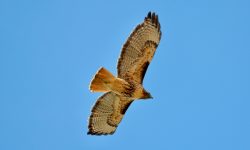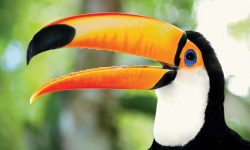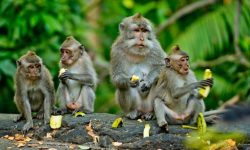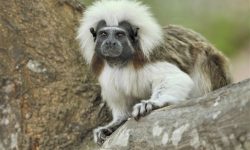Among Earth’s most unusual mammals, the giant anteater stands out as a true oddity. With a tube-like snout, a tongue that can stretch two feet long, and powerful claws for tearing into termite mounds, this creature looks like something out of a fantasy story. But it’s very real—and deeply important to the ecosystems it inhabits. In this article, we’ll explore why the giant anteater is one of nature’s strangest and most fascinating animals.
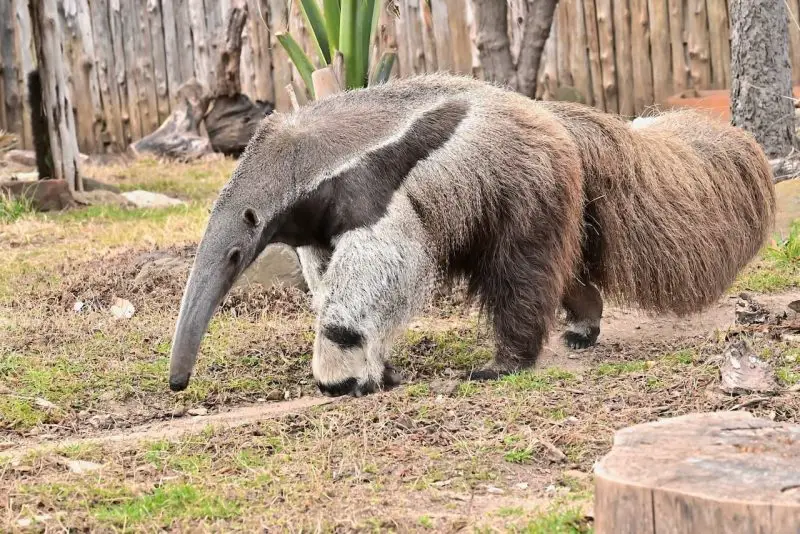
What Is a Giant Anteater?
A Toothless Marvel of Evolution
The giant anteater (Myrmecophaga tridactyla) is one of the most distinctive mammals on Earth. As a member of the order Pilosa, which it shares with sloths, this fascinating species is the largest of all anteaters. Native to Central and South America, it inhabits a range of ecosystems—from grasslands and savannas to tropical rainforests—where it roams in search of its primary prey: ants and termites.
This mammal can grow up to 7 feet (2.1 meters) in length from snout to tail and weigh between 40 and 100 pounds (18–45 kg), making it not only the largest anteater but also the largest insectivorous land mammal in the world.
Anatomical Oddities That Serve a Purpose
The giant anteater is built like no other mammal. Its appearance is marked by several highly specialized features that are as bizarre as they are brilliant:
-
Elongated snout: A tube-like muzzle houses its extraordinary tongue and powerful olfactory organs.
-
Incredible tongue: Measuring up to 2 feet (60 cm) long, its tongue can flick in and out over 150 times per minute, coated in sticky saliva to collect insects with stunning efficiency.
-
Mighty claws: The forelimbs bear huge, curved claws designed to tear into the hard exteriors of termite mounds and anthills. These claws are so formidable that anteaters walk on their knuckles to avoid wearing them down.
-
Sweeping tail: A dense, bushy tail provides warmth and camouflage, often draping over the animal like a blanket during rest.
The Mammal That Eats Without Chewing
Among the strangest features of the giant anteater is the complete absence of teeth. Unlike most mammals, it doesn’t chew its food. Instead, it relies on muscular contractions of the stomach and swallowed sand or grit to help grind down the insects it devours. With its powerful tongue and specialized digestive system, the giant anteater can consume up to 30,000 insects a day, making it a highly efficient predator of some of the planet’s most abundant arthropods.
Habitat and Range
Where Do Giant Anteaters Live?
The giant anteater thrives across a surprisingly diverse range of environments in Central and South America. From the steamy rainforests of the Amazon Basin to the dry savannas and open grasslands of the Pantanal, this unique mammal shows remarkable ecological adaptability. It is currently found in countries such as Brazil, Paraguay, Argentina, Colombia, and parts of Central America, although habitat loss has fragmented many of these populations.
What unifies these habitats is not climate or vegetation, but the abundance of ants and termites, which make up nearly 100% of the anteater’s diet. The animal prefers mosaic landscapes—areas where open terrain allows for efficient travel and forested patches provide shade, shelter, and safety from predators. These mixed habitats also support higher insect densities, which is critical for an animal that needs to consume tens of thousands of invertebrates daily.
Solitary Wanderers of the Wild
Unlike some of their smaller, tree-dwelling relatives like the silky anteater, giant anteaters are strictly terrestrial. They rarely climb and are almost always seen alone, except during mating or when a mother is carrying her young.
Using their keen sense of smell—estimated to be up to 40 times stronger than that of humans—they methodically patrol their home ranges, often traveling up to 2.5 miles (4 km) per day in search of insect-rich sites. Their slow, deliberate gait and curved claws create a unique walking pattern, with the knuckles of their front limbs curled under to protect their formidable digging tools.
Despite their slow pace, giant anteaters are highly efficient foragers, able to locate and exploit insect colonies with minimal disturbance, feeding quickly before the insects can mount a full defense.
Diet and Feeding Behavior
Eating 30,000 Insects a Day
Though imposing in size, the giant anteater (Myrmecophaga tridactyla) survives on a diet composed almost exclusively of ants and termites. Equipped with massive forelimbs and curved claws, it tears open insect nests with surprising power and precision. Once inside, the anteater deploys its most iconic tool—a long, sticky tongue that can extend up to 2 feet (60 cm) and flick in and out up to 150 times per minute.
Each flick captures dozens of insects, and over the course of a day, a single anteater may ingest up to 30,000 individual prey. This feeding style demands efficiency, not destruction. Rather than annihilate an entire colony, the anteater samples a portion and moves on, allowing the nest to recover and serve as a future food source. This “grazer” approach to predation makes the giant anteater a model of sustainable insectivory.
No Chewing Required
Giant anteaters are edentulous mammals—they lack teeth entirely. But what they miss in oral processing, they make up for in digestive specialization. In place of chewing, swallowed insects travel directly to a highly muscular stomach that functions much like a gizzard in birds. There, ingested sand, pebbles, and grit—accidentally consumed while foraging—aid in grinding the hard exoskeletons of ants and termites.
Adding to this mechanical digestion is a bath of powerful stomach acid, among the most acidic found in mammals, which helps dissolve the chitin-rich shells of their prey. This allows the anteater to efficiently extract protein and other nutrients from even the smallest insects.
Remarkable Adaptations
Precision Snout and Prehensile Tongue
At first glance, the elongated snout of the giant anteater might seem oddly comical, but it’s actually a masterpiece of evolutionary engineering. Inside this narrow, tube-like structure lies a highly adapted tongue anchored far back in the sternum. This tongue can extend over 60 centimeters (2 feet) and retract at lightning speed—up to 150 times per minute.
The tongue’s surface is coated in thick, sticky saliva, making it perfectly suited for slurping up ants and termites deep within nests and tunnels. The slender profile of the snout lets it penetrate the smallest crevices, giving the anteater unrivaled access to insect colonies that would be unreachable to other predators.
Claws Built for Combat and Cuisine
Among the most formidable features of the giant anteater are the razor-sharp claws on its forelimbs. Each front paw houses three enlarged claws, particularly the middle digit, which curves into a powerful hook. These claws are essential for tearing into the hardened walls of termite mounds and underground ant nests.
Yet these tools are not just for foraging. When threatened, the giant anteater can rear up on its hind legs, using its muscular tail for balance while lashing out with deadly precision. In rare but documented cases, this defense has proven powerful enough to fend off jaguars or pumas—making the giant anteater one of the few herbivorous mammals that can lethally defend itself.
Daily Life and Behavior
Activity Patterns: When the Anteater Roams
The daily rhythm of a giant anteater varies depending on its environment. In areas heavily impacted by human activity, they are primarily nocturnal, moving under the cover of darkness to avoid disturbance. In more secluded, undisturbed habitats, they switch to a diurnal schedule, foraging and traveling during daylight hours.
Despite their imposing size and strength, giant anteaters spend much of their time at rest. On average, they sleep or lounge for up to 15 hours a day, often curling into a ball and covering themselves with their bushy tail. This not only helps retain body heat but also provides camouflage, mimicking a mound of leaves or debris in the wild.
Communication and Super Senses
Giant anteaters are mostly silent creatures, lacking the complex vocalizations found in many social mammals. Communication between individuals, especially mothers and offspring, is subtle and may involve low-frequency sounds or physical contact.
Their sense of smell, however, is extraordinary. Estimated to be up to 40 times more sensitive than that of humans, it serves as their primary tool for interpreting the world. From tracking the pheromone trails of ants to detecting hidden insect nests beneath the soil, smell guides nearly every aspect of their behavior. It may also help them detect predators or recognize familiar territories.
Reproduction and Lifecycle
A Slow and Steady Strategy
The reproductive strategy of the giant anteater is notably slow and conservative—a trait that limits the species’ ability to recover from population declines. Females typically give birth to a single offspring after a gestation period of around 190 days (over six months). This solitary pup, born fully furred and with eyes open, immediately climbs onto the mother’s back, where it will remain for up to a year.
Remarkably, the baby’s fur pattern aligns with the mother’s stripes, offering visual camouflage that conceals the pup from predators. During this extended period, the mother continues to forage while carrying the juvenile, only weaning it once it begins to explore independently.
Such a low reproductive rate, combined with long maternal care, means that giant anteater populations grow slowly and are highly vulnerable to external pressures like habitat loss or hunting.
Conservation Status
Vulnerable and Declining
The giant anteater (Myrmecophaga tridactyla) is currently listed as Vulnerable by the International Union for Conservation of Nature (IUCN). In certain regions—particularly in Central America—local populations are nearing extinction.
Their decline is driven by a combination of human-induced threats:
Habitat Destruction and Fragmentation
Giant anteaters require large ranges to forage efficiently. However, deforestation, especially for agricultural expansion and cattle grazing, has dramatically reduced their available habitat. Forested corridors that once allowed them to migrate and maintain genetic diversity are disappearing.
Road Mortality
Due to their slow movement and poor eyesight, anteaters are often victims of roadkill. Highways cut through their territories, and their low awareness of vehicles makes them particularly vulnerable.
Fire and Poaching
In parts of South America, wildfires, both natural and human-caused, destroy essential habitats and sometimes kill anteaters outright. Additionally, although not commonly hunted for food, they are occasionally poached for body parts or out of fear.
Conservation Efforts
Protecting a Living Relic of South America
Given the giant anteater’s vulnerable status and slow reproduction, conservation strategies are essential to its long-term survival. Several countries within its range have begun implementing measures that blend habitat protection, public education, and scientific research.
Safeguarding Habitats and Movement
In Brazil and Argentina, protected reserves have been established to maintain critical habitats. These areas safeguard not only anteaters but also countless other species within the same ecosystems. To counteract the risks posed by roads, wildlife corridors and crossing structures are being introduced. These provide safe passage across fragmented landscapes, aiming to reduce the number of fatalities caused by road traffic.
Community Engagement and Education
Educating local communities is another key pillar of conservation. Awareness campaigns help dispel myths, reduce fear, and emphasize the ecological value of the anteater, particularly its role in natural pest control. In areas where ecotourism is growing, anteaters are increasingly seen as symbols of biodiversity worth protecting.
Leading Organizations
Groups like Proyecto Tamanduá in Brazil and the Wildlife Conservation Society (WCS) are at the forefront of conservation work. Their initiatives include:
-
Field monitoring and GPS tracking to study movement patterns and habitat use
-
Rescue and rehabilitation of injured anteaters
-
Research into genetics and population health to inform better management practices
These integrated efforts are crucial in ensuring that this strange and beautiful mammal continues to roam the grasslands and forests of South and Central America for generations to come.
Why the Giant Anteater Matters
A Keystone Insectivore
The giant anteater plays an essential ecological role in the ecosystems it inhabits. By consuming tens of thousands of ants and termites daily, it helps regulate insect populations that could otherwise damage vegetation or unbalance food chains. In doing so, it acts as a natural pest controller, benefiting the broader plant and animal communities that share its habitat.
Their digging behavior, while searching for insect nests, serves another purpose: it aerates and mixes the soil, enhancing microbial activity and facilitating nutrient cycling. These subtle but critical actions improve soil fertility and promote healthy vegetation growth—vital processes in savannas, grasslands, and forest margins.
Cultural and Scientific Significance
Beyond its ecological contributions, the giant anteater carries cultural weight in many indigenous South American traditions, where it has appeared in folklore as a mysterious, wise, or even magical creature. In modern times, it has become a symbol of wildlife conservation and ecological diversity throughout Latin America.
From a scientific perspective, this animal represents a fascinating case of evolutionary specialization. Its lack of teeth, elongated snout, and high-efficiency feeding mechanism make it a model species for studying adaptation to insectivory. Understanding how such a specialized mammal survives in dynamic ecosystems provides valuable insight into biodiversity, resilience, and evolutionary biology.
Final Thoughts
The giant anteater may look bizarre at first glance, but every trait—from its sticky tongue to its slow, lumbering gait—serves a unique purpose. It’s a specialist, perfectly adapted to a niche that few other mammals could fill. In a rapidly changing world, the survival of such creatures is not just a conservation priority—it’s a testament to the richness of life on Earth. Understanding and protecting the giant anteater helps ensure that one of nature’s most extraordinary mammals continues to roam the wild.



